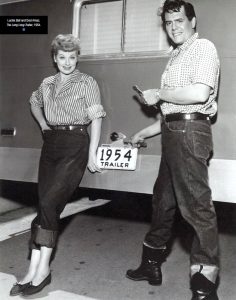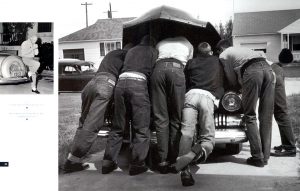A PRE-SHRUNK PRE-HISTORY
The distance from a gold rush-era Nevada mining town to a twenty-first century Internet auction house near San Francisco is a few hundred miles and about half as many years. A pair of 1880s Levi’s blue jeans recently made the journey with only a few nicks and bruises to tell the tale.
Experts say this remarkable pair of jeans—or “denim waist overalls,” as their original owner called them—was produced between 1880 and 1885, and cost $1.25 when brand new. Unearthed from a pile of miners’ junk in 1998, Levi Strauss & Co. bought the garment back at auction three years later for $46,532. What is extraordinary about the sale is not that the artifact, created almost thirty years before the first Model-T Ford, lived the life of a miner, or that it outlasted twenty-three American presidencies and still survived almost totally intact. What make the story remarkable is that this humble piece of denim remains instantly recognizable—as workpants, leisurewear, even as high fashion—to the world in which it reemerged 120 years later.
That’s not to say that a pair of blue jeans cut in the 1880s didn’t come into being without a fair bit of history already woven into its twill. Even the origin of the name “denim” is surprisingly contentious. Although conventional wisdom holds that the word is an Anglicized version of “serge de Nimes,” a fabric typical to the French mill town of Nimes, the fact remains that serge is a wool blend often mixed with silk, while denim has always been cotton. Pascal Gorguet-Ballesteros, curator of a 1994 exhibition at the Musée de la Mode et du Costume in Paris, which documented the 250-year history of jeans, denies point blank that denim has its origins in France. “This is all just a patriotic myth,” she says. “I’m sure that denim is not French.” In fact, there was a fabric called “denim” in England in the 1600s, and it’s possible that merchants hit upon the French-sounding name as a way to exoticize their particular brand of twill. But there was also a wool blend sold in France in the seventeenth century known as “nim.” As for the word “jeans,” it came from the cotton workpants worn by sailors from the port of Genoa, Italy, who were themselves known as “Genes.”
Whatever its origin, denim has always been important to the cotton industry, and cotton was vital to the economic development of America. Sprawling plantations created a new class of landed gentry in the South, while textile milling became the country’s first major industry in the North. The Levi’s waist overalls discovered in Nevada were produced in San Francisco with denim from the Amoskeag Mill in Manchester, New Hampshire, which was the biggest textile producer in the world by the time its looms shut down in 1936. The mighty Amoskeag facility was built in 1838, just fifty-one years after the establishment of the country’s first mill in Beverly, Massachusetts.
The introduction of textile milling technology to America—which had been banned in the colonies by King George III—was significant enough to warrant a visit by President George Washington, barely six months after his inauguration. A 1789 edition of The Salem Mercury records his inspection: “He was shown, in the lower story, a jenny of eighty-four spindles upon which some of the manufacturers were spinning warp; and three or four others were spinning weft; and about a dozen looms upon which they were weaving cotton denim, thickest, corduroys, [and] velveret.”
Two centuries before Jimmy Carter immortalized his image as America’s farmer-president by being photographed in jeans, Washington put himself on record as the first chief executive impressed by denim. In his diary entry for the day, he wrote: “In short, the whole seemed perfect, and the cotton stuffs which they turn out, excellent of their kind.” America’s love affair with denim had begun.
©2002 powerHouse Cultural Entertainment, Inc. Texts ©2002 Bob Morris. All rights reserved.











